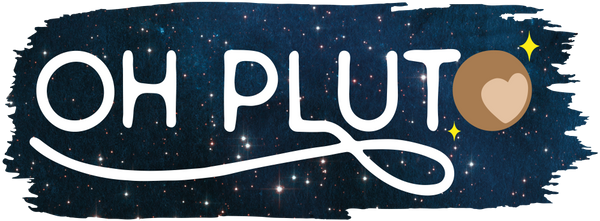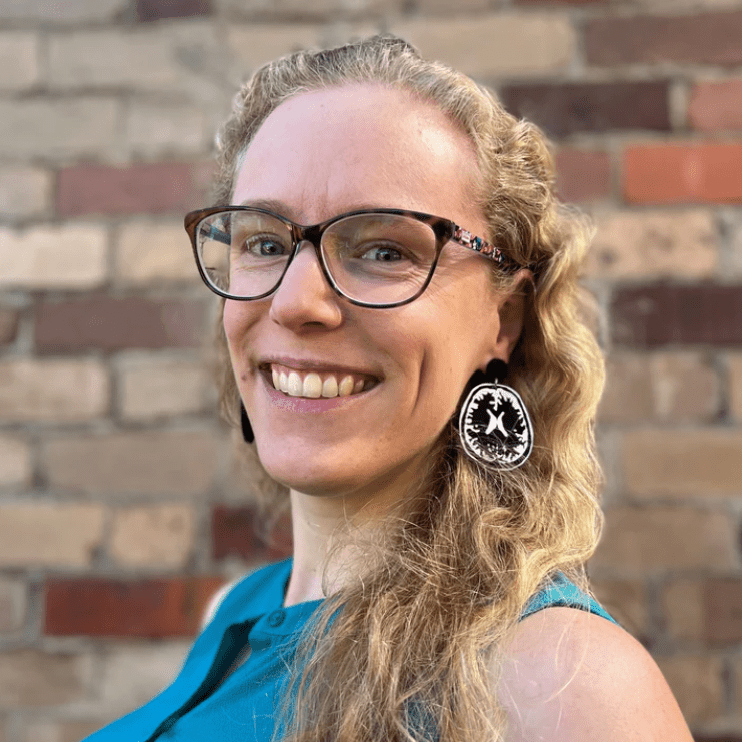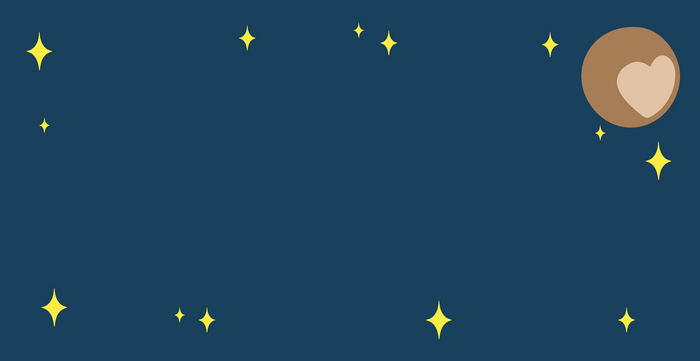In this blog post, I'll share a bit about my journey up to now, including my past experiences, how Oh Pluto came to be, and why I love creating science-themed jewellery. Future posts will explore topics such as my design process and inspirations, laser cutting tips and tricks, the challenges and rewards of running a small business, my acrylic recycling methods, and anything else that I think will interest readers.
I was born in Victoria, Australia and grew up in the south-eastern suburbs of Melbourne. I'm still living in close proximity to my childhood home.
As a kid I was both an avid crafter and a big fan of science and learning about the natural world. I loved cross-stitching, painting, making dioramas, cardboard construction, writing short stories and working with polymer clay and paper mâché. I built countless Lego and Meccano models, loved matchbox cars, and have fond memories of making solar powered robots, gas powered rockets, and assembling simple circuit boards. And of course, I loved peering through both microscopes and telescopes.

As a child, I aspired to become a scientist or engineer, which greatly influenced my high school subject choices. I pursued specialist mathematic and mathematical methods, biology, chemistry and physics, because I couldn’t pick just one. I ended up completing 7(!) VCE (Victorian Certificate of Education) subjects across year 11 and 12.
After high school, I pursued a Science and Engineering degree at Monash University. I explored various engineering fields but ultimately settled into Materials Engineering. This choice was probably influenced by my creative side as I enjoyed learning about the many different applications of metals, ceramics, plastics and nanomaterials. I met and started dating my now-husband Simon during my first year of university. We shared physics and mathematics classes in the early years before branching off into different paths—he focused on computer science while I pursued materials science and engineering.
As part of my studies I worked on a few interesting materials related projects. In my final year of engineering, DNA directed nanofabrication of gold nanoparticles looked at self-assembly of tiny building blocks into nanostructures using the selective properties of DNA.
My PhD thesis was completed with the plastic fabrication lab and textiles manufacturing group at the CSIRO, in collaboration with Melbourne University. The aim of the project was to create a textile which allowed for thermal mapping across a wound bed for early detection of inflammation or infection.


It involved complex polymer melt extrusion to create a fibre encapsulating a thermochromic material (think mood rings); capable of changing color with fluctuations in body temperature. The work was featured in Fresh Science and got a bunch of press coverage at the time, which was awesome but very stressful! To this day my work is featured in the Think Ahead! exhibition at ScienceWorks in Melbourne. Pretty cool right?

After completing my PhD, I collaborated with a medical implants company to develop a porous high-density polyethylene (HDPE) implant material. This could be shaped into custom forms to replace bone tissue in the cranium and other non-load-bearing areas. We focused on polymer melt extrusion and 3D printing to create patient-specific molds.
In this same year (2012), my still-boyfriend of 9 years Simon proposed to me while we were viewing the total solar eclipse near Cairns, a trip we had taken specifically for this incredible event. A truly mind blowing experience and a pretty magical proposal.
 Picture: sQuark (left) and Beaker (right)
Picture: sQuark (left) and Beaker (right)
When my current research project came to an end and the grant application we were working on for further plastic extrusion work was unsuccessful, I decided to take a career break. Simon and I had recently bought a house so I spent the time on renovations, as well as wedding planning. I also needed to break due to burnout. Previously I had not taken any time off between moving from high school, to undergraduate, to post graduate, to researcher, and I felt like I needed an overdue gap year! I had also begun to grow uncertain about pursuing an academic career path, due to the stresses and isolation I felt during my PhD, and realising academia can involve a fairly constant slog of grant applications and job uncertainties.
Due to my growing interest in 3D printing and experience in the medical applications space, I eventually took up a casual research support position at the University of Melbourne, teaching researchers how to create 3D models of anatomy from multilayered patient image data such as MRI, CT, Ultrasound, PET and X-rays. Following the generation of a digital 3D model, researchers could create a physical 3D print, for applications such as education, medical training, surgical planning and custom implant manufacture. I helped coordinate a 3D printing conference hosted by UniMelb, which was fascinating too! I also bought my own 3D printer and dabbled in the technology personally.
 Picture: From MRI scan to 3D printed Trachea.
Picture: From MRI scan to 3D printed Trachea.
This casual research position was invaluable at that time in my life, as my husband and I went on to have our daughter in 2016, moved to New York for 7 months following his work opportunities, before moving back home and having our son in 2018. Through this time I was able to take quality maternity leave, work flexibly around caring for our young children, and support my husband Simon in his growth as a software engineer.
While we were in New York, I wasn't working and spent much of my time exploring the city with our daughter, who was swiftly transitioning from baby to toddler. In the times when she was napping in our small Brooklyn apartment, I would dream of all the creative projects I would embark on when we were back home in Melbourne. I stumbled upon the acrylic brooch scene, and I became interested in the laser cutting process as a creative medium, especially after having been exposed to it in the Engineering and Architecture spaces at the University of Melbourne.


Picture: Temporarily moving to New York with a toddler.
When we got back home to Melbourne I purchased my first laser cutter, a fairly low end k40 CO2 machine, with an ~A4 sized cutting bed. Through extensive research, trial and error, I taught myself the fundamentals of laser cutting and vector art design, marking the start of my creative journey!
I quickly decided that I wanted to focus primarily on science-inspired designs, both to reflect my own interests and to stand out from other acrylic jewellery businesses. I began with astronomy-themed pieces, which also inspired the name of my new venture, Oh Pluto—space-themed with a hint of whimsy.
After creating a logo and branding elements, I started selling on Etsy before eventually rebranding and launching my own Shopify-based website.
 Picture: Pretty proud of myself with some statement cell earrings.
Picture: Pretty proud of myself with some statement cell earrings.
Establishing and running a small business with small children is not an easy feat, especially after the pandemic hit, with all the lockdowns, and loss of childcare services and family support. At the time I was also back working casually with the University of Melbourne, but eventually lost that position due to a cost cutting restructure. Post pandemic, I put more focus on Oh Pluto as my primary form of income, but it was still secondary to kids and domestic responsibilities.
Nevertheless, I slowly but steadily expanded the range of jewellery I had on offer to include Biology, Chemistry, Physics, Geology, Mathematics, Anatomy and more, building a steady STEM loving customer base and gaining confidence in the viability of the business. I got wholesale orders, dabbled in a few markets here and there, and gained experience stocking in retail spaces. I have always focussed mainly on Science earrings, as this is what I have found to be most popular and what I personally prefer to wear.
My customer base includes primary and secondary school teachers, science teachers and otherwise, as well as university graduates, honours and PhD students, medical students and professionals, and so much more. I absolutely LOVE creating a design that is a little bit niche, but that fans in a particular field just HAVE to have. Since I have always loved Science as a whole rather than any particular subject, I have been striving to create designs that cover a wide range of disciplines and niches. Limitations to the pace of new designs being released has been mostly due to my own time constraints.

 Picture: I've been caught off guard by the popularity of these sedimentary layer earrings. A shock success!
Picture: I've been caught off guard by the popularity of these sedimentary layer earrings. A shock success!
In addition to making Science jewellery, I have also put in a lot of effort to create a line of 100% recycled jewellery made from acrylic scrap, details of which can be found elsewhere on the website. (I will also write a blog post about this in the future). My materials engineering background has been invaluable here.

Picture: A pair of recycled acrylic earrings.
In late 2022 I felt justified to upgrade to a larger and more capable laser cutter, the Koenig Rapid K0406. This upgrade has made a huge difference in the output and quality of my work! My favourite feature is a top-down camera that displays the layout of the cutting bed, which makes laying out jobs much quicker, more efficient and a lot less wasteful.
And as of the start of this year (2024), both of my children are now in Primary school, which gives me more structured time for design, manufacture, social media, website maintenance and order processing. I have already seen a significant difference in engagement and sales since the start of the school year and I can’t WAIT to get stuck into my ever increasing list of ‘design ideas’ and see what business looks like at the end of this year.
I hope this has been an interesting read for those of you who made it to the end!
Yours geekily,
Louise van der Werff



